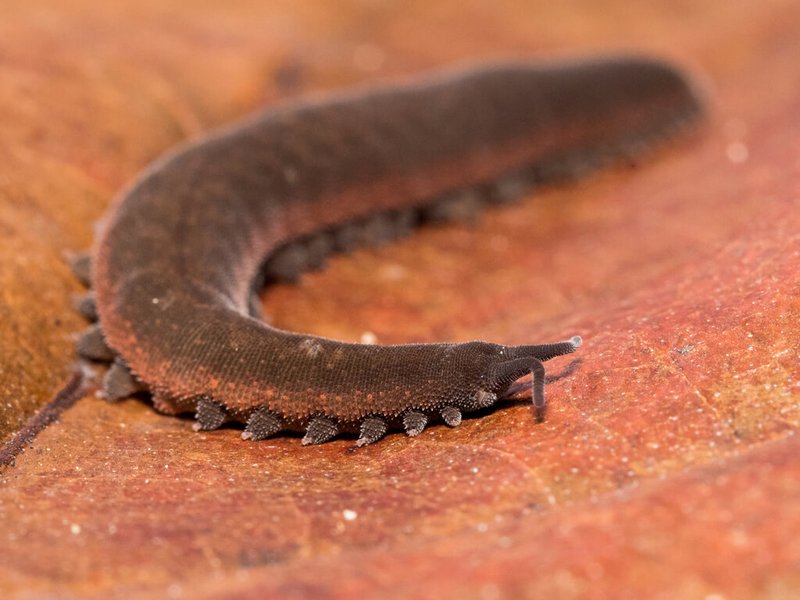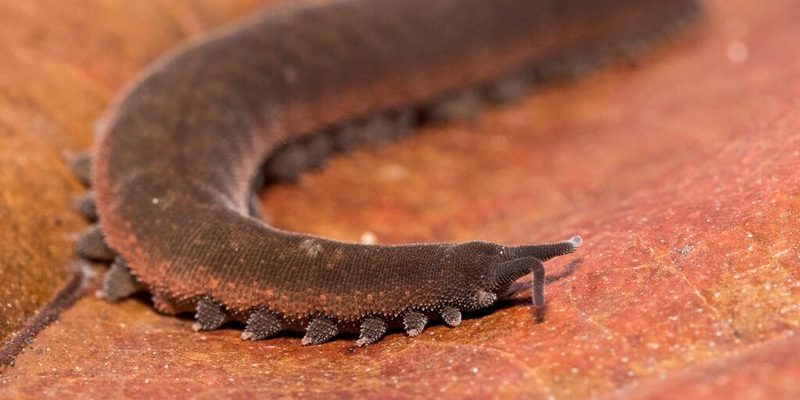
Velvet worms, known scientifically as *Onychophora*, might not be as celebrated as spiders, but they’re just as intriguing. Imagine a creature that looks like a blend between a caterpillar and a slug, moving slowly but surely in its moist forest habitat. These little hunters have a few tricks up their sleeves when it comes to snagging their meals. Meanwhile, spiders—who’ve had plenty of screen time in documentaries and horror movies—are renowned for their incredible webs and hunting techniques. Let’s explore how these two groups of creatures tackle the challenges of finding food.
What Are Velvet Worms?
Velvet worms are soft-bodied, segmented creatures that thrive in humid environments. They can be found in rainforests and jungles around the world, particularly in Central and South America, as well as parts of Africa and New Zealand. These little hunters typically grow to about 1 to 8 inches in length and have a distinctive velvety texture, which is where their name comes from.
What’s unique about velvet worms is their combination of terrestrial and predatory adaptations. They possess a pair of large, sensitive antennae that help them navigate their surroundings. Think of them as the feelers of a blind person, guiding them through an obstacle course. And just like a magician pulling a rabbit out of a hat, these creatures have an astonishing ability to shoot a sticky substance from special glands in their heads, which helps them immobilize their prey.
How Do Velvet Worms Hunt?
Velvet worms employ a fascinating hunting method that’s quite different from the classic web-weaving approach of spiders. They are ambush predators, meaning they prefer to remain hidden until the right moment. When they sense potential prey nearby—usually small insects—they excrete a sticky slime that catches and immobilizes it.
Here’s how it usually goes down: the velvet worm will crawl stealthily through the leaf litter, using its antennae to pick up vibrations. Once it’s close enough, it’ll launch that sticky fluid, ensnaring insects like ants, beetles, or even small spiders. You might say it’s like a tactical ninja move, relying on patience and precision rather than sheer speed.
After immobilizing their target, velvet worms munch away with their toothy jaws. They have a unique way of digesting their prey externally, secreting enzymes that break down the food before they slurp it up. This is quite different from how many predators consume their meals, and it showcases the velvet worm’s unique adaptations for survival.
What Are Spiders and Their Hunting Techniques?
Spiders are part of a larger group of arthropods called arachnids, which also includes scorpions and ticks. Unlike velvet worms, they come in a variety of shapes and sizes, with over 45,000 known species. From the common house spider lurking in your corner to the exotic jumping spider with its impressive agility, they display an array of hunting tactics.
Most spiders are known for weaving intricate webs, which serve as traps for unsuspecting prey. These webs can vary widely, from the classic orb shape of garden spiders to the messy tangles spun by cobweb spiders. Some spiders, like the wolf spider, don’t even bother with webs. They’re the active hunters of the spider world, prowling the ground for their next meal, similar to how a velvet worm stalks its prey.
When a spider gets its catch in the web, it quickly wraps it up in silk to keep it secure. Then they inject venom into their prey, paralyzing it before feeding. It’s not too different from a velvet worm’s approach of immobilizing prey with slime, but the way they get there can be quite different.
Comparing Hunting Strategies
Now, if we put velvet worms and spiders side by side, a few key differences in their hunting strategies become apparent.
- Hunting Method: Velvet worms are ambush predators relying on stealth, while many spiders use webs to trap prey.
- Food Processing: Velvet worms digest their prey externally, which is pretty unique. Spiders usually rely on venom to digest food internally.
- Environment: Velvet worms thrive in moist environments, preferring dark, damp places. Spiders can be found in various habitats, often adapting their hunting methods to their surroundings.
While both are effective hunters, it’s clear they’ve adapted to their environments in distinctly different ways. Each method has allowed them to survive and thrive in their respective niches.
Why Study the Hunting Behavior of Velvet Worms and Spiders?
Understanding the hunting behaviors of these two creatures can provide important insights into their ecological roles. Velvet worms, for instance, help control insect populations in their habitats. Likewise, spiders are essential in maintaining the balance within ecosystems, often keeping pest populations in check.
By studying their strategies, scientists can learn about evolutionary adaptations, biodiversity, and even the health of ecosystems. Plus, who wouldn’t want to learn more about these fascinating creatures and their quirky hunting techniques?
Also, every time you come across a spider spinning its web or see a velvet worm gliding through the forest floor, you’ll have a new appreciation for their survival skills. It’s like gaining a backstage pass to nature’s most incredible performances!
So, the next time you’re in the great outdoors or even just in your backyard, take a moment to think about velvet worms and spiders. They may be small, but their hunting behaviors are a testament to the incredible adaptations that allow them to thrive.
Velvet worms have their unique ambush tactics, while spiders flaunt their web-weaving skills. Both are vital to their ecosystems, reminding us of the beauty and intricacy of life. It just goes to show that in the world of hunting, whether you’re armed with slime or silk, there’s more than one way to catch a meal!

